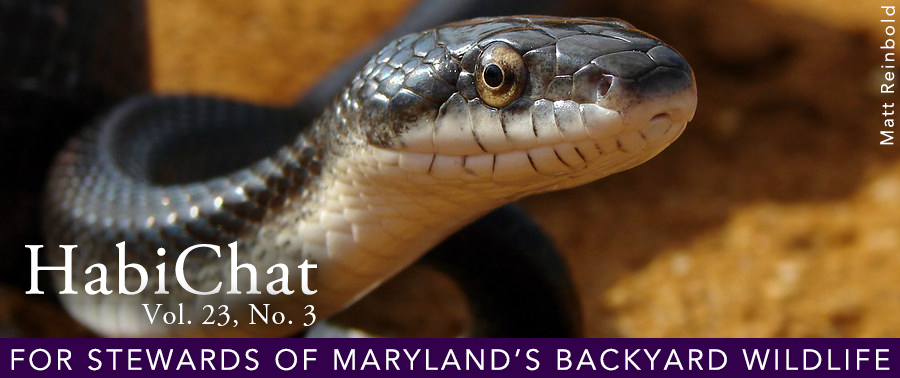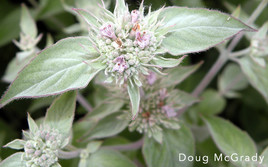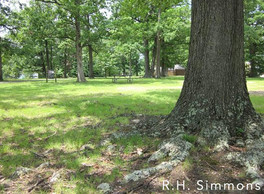
|
|
|
|
Welcome to Summer!
It seems like spring has quickly blossomed into summer! We are now in peak bloom time for many local plant species, as well as peak activity for local wildlife.
In this issue of HabiChat, you can learn about a lovely group of perennial flowers known as mountain mints, as well as a common backyard snake – the eastern ratsnake. In addition, thanks to Rod Simmons, Natural Resource Manager and Plant Ecologist with the City of Alexandria, I have included a short article on alternatives to traditional lawn.
I am also excited to announce a new Common Snakes of Maryland Photo Guide which covers twelve of the most commonly seen snakes in the state. I also have been busy updating our Snakes of Maryland pages to reflect recent changes in taxonomy.
As summer ripens, check out some of our previous HabiChat articles on topics such as Xeriscaping, Minimizing Pesticide Impacts to Pollinators or Growing Your Own Seed. Don’t forget to add water to your landscapes as well! Finally, keep in mind that deer are currently giving birth. For questions regarding fawns, check out our Deer Fawn page.
Happy Habitats,
Kerry Wixted
|
|
|

Native Plant Profile: Mountain Mint
I first learned about mountain mint (Pycnanthemum spp.) several years ago, as a Penn State Extension study found it to be one of the top pollinator plants in their common gardens. Out of the 86 native plant species and cultivars tested, clustered mountain mint (Pycnanthemum muticum) ranked number one for the diversity of pollinators that visited. I had to try it out for myself, and it hasn’t disappointed.
|

Native Animal Profile: Eastern Ratsnake
I was once deathly afraid of snakes, often screeching and running through the forest when I encountered a scaly friend. In college, my desire to be a field biologist, coupled with exposure to and knowledge of snakes, helped soften my feelings for them. I have grown particularly fond of the eastern ratsnake.
The eastern ratsnake is our largest snake in Maryland and is a common visitor in backyards.
|

Lawn Alternatives
Traditional lawns – a single cool season grass species like zoysia or fescue or bermuda, completely covering a yard space and maintained at three inches or shorter – are unfortunately often ecological wastelands that require excess water, nutrients, pesticides and maintenance. Traditional lawns also support few wildlife species.
To help local wildlife, consider replacing non-native grass lawns with native alternatives.
|
|
|
|
|
|
Wild Acres is a voluntary program that encourages residents to create backyard wildlife habitat. For more winter tips and tricks, check out the HabiChat archives.
|
|
Home News Licenses Photo Contest Nursery Park Reservations Store
|
|
|